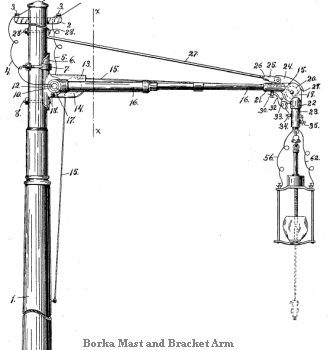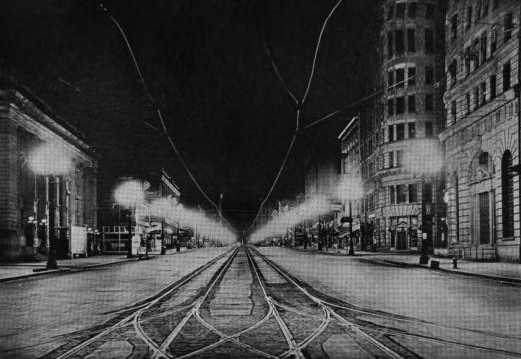With the advent of the Mazda lamp, incandescent light could be used for street lighting. Early pendant type incandescent street lamps were similar in design to their arc lamp predecessors.
GE "Victory Lighting" of 1919.
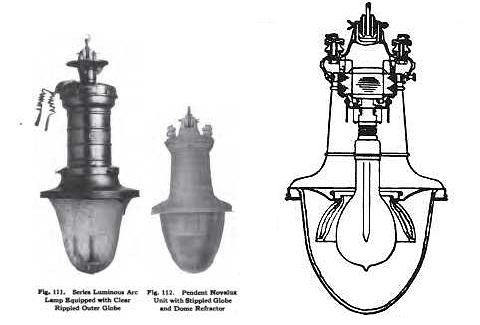
GE Novalux lighting - carbon arc and "Form 6" incandescent lamps.
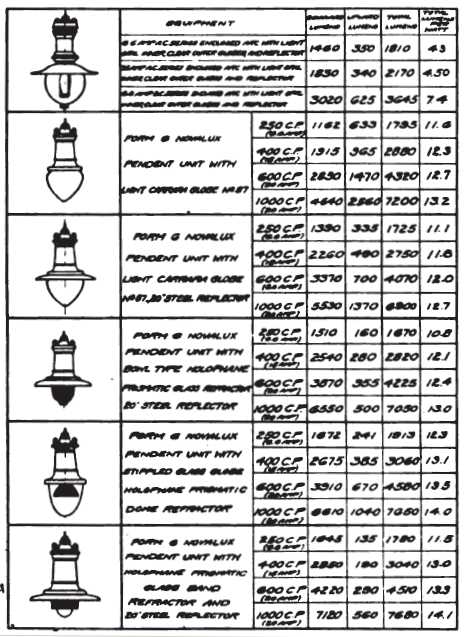
The incandescent luminaire bodies were large as most contained isolation auto transformers.
Form 6 Radial Wave.
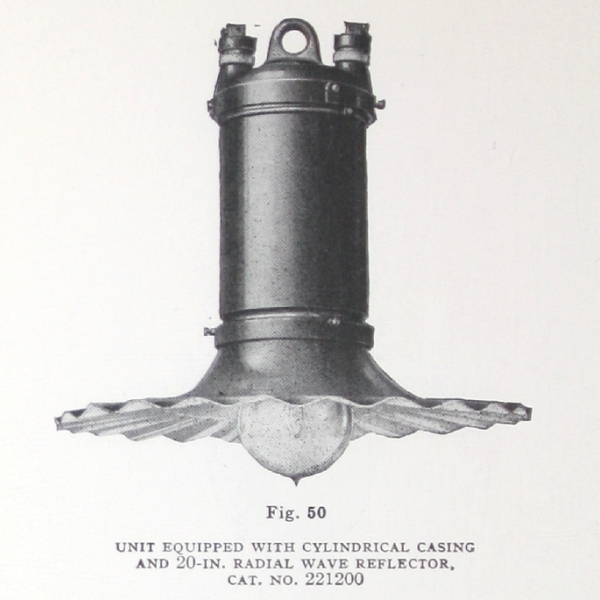
Because early street lights were either controlled manually or by a time clock, most lighting systems used high voltage series circuits that could power dozens of lamps from a single source. Early conductors (wires) were fabric coated and did not provide sufficient insulation when in contact with metal objects, particularly with respect to suspension type luminaires. As a result most early metal bodied street lights were quite bulky, resembling arc lamps of earlier days. Conductors had to be connected on the outside and the current entered the luminaires via stout conductor rods that were well insulated by porcelain bushings.
(For a detailed discussion on series circuits, please visit
Understanding Series Circuits.)
Mast-mounted series circuit luminaires that were supplied internally and where the wiring was not subjected to movement and weather could be designed with more compact heads.
GE internally wired pendant luminaires
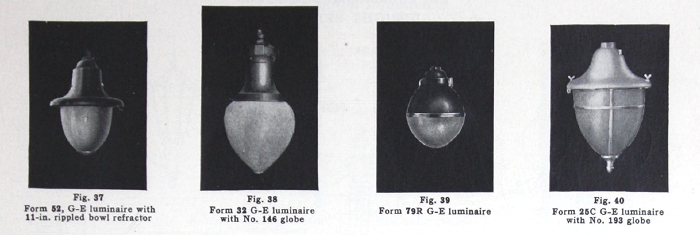
Post mount luminaires were evolving from Ben Franklin's flat glass pane design to round globes, then to ornamental "acorns" that were decorative but where their shapes also helped direct light where it was most desired.
Examples of post top "acorns."
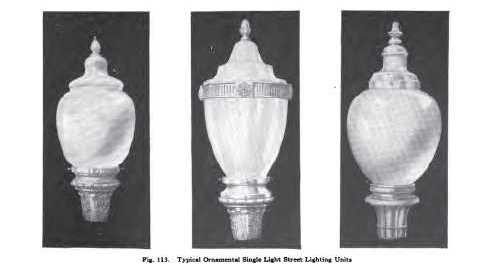
Post casings could accomodate Jones sockets or autotransformers.
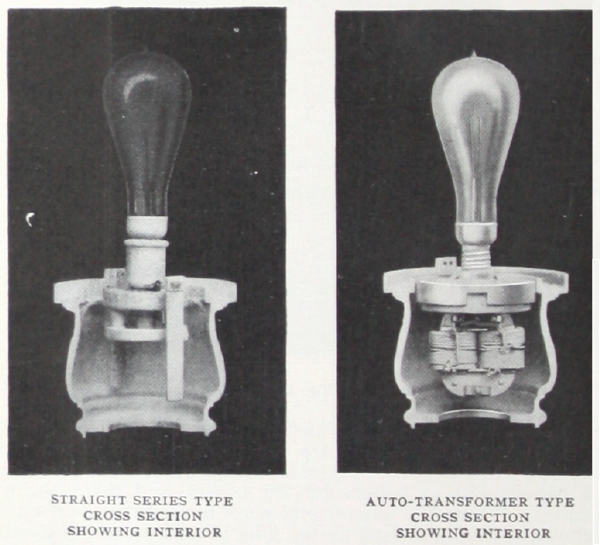
For use in critical locations, manufacturers designed lamps with multiple luminaire heads, as well as redundant systems that when the primarly lamp burned out, a secondary lamp would be automatically switched on.
GE Novalux "Duoflex." (The upper lamp would light if the lower lamp burned out.)
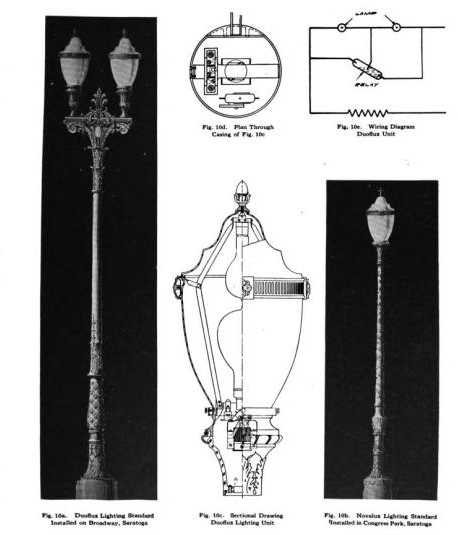
Early designers were more concerned with illuminating general areas and not with cutting off or redirecting stray light. While the intensity of Mazda incandescent light in the early days of incandescent street lighting was significant as compared with other sources, the lamps were not nearly as brilliant as lamps are today. As a result the control of "trespassing" light was not a significant issue and most early lamps were omnidirectional.
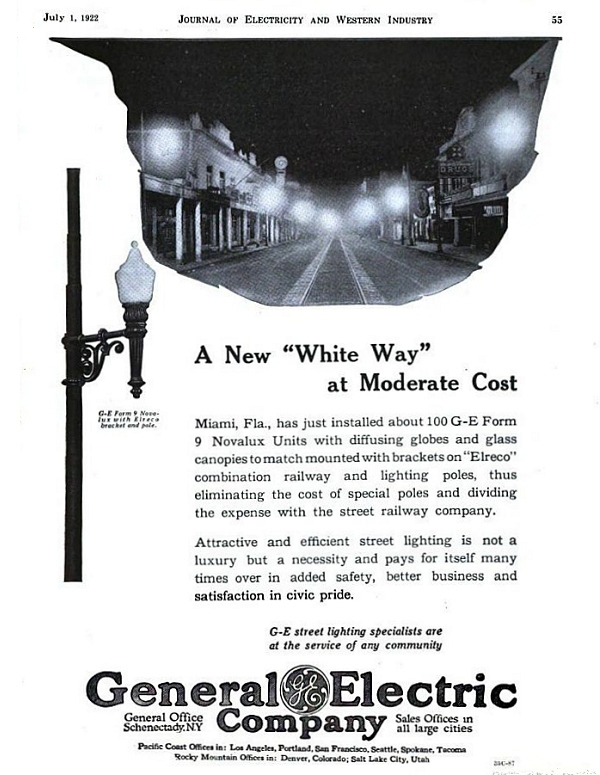
| 
